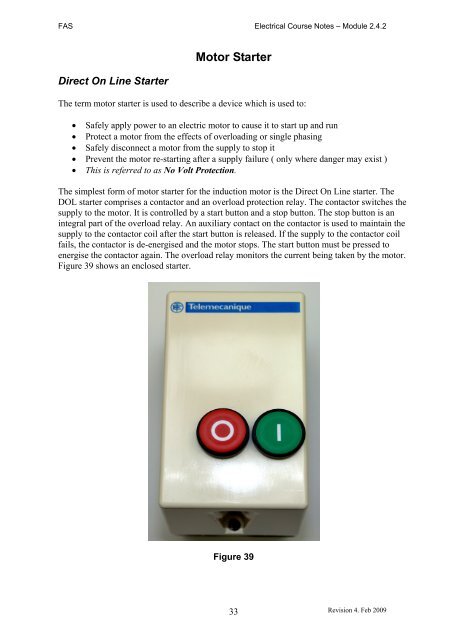Trade of Electrician Motor Control COURSE NOTES - eCollege
Trade of Electrician Motor Control COURSE NOTES - eCollege
Trade of Electrician Motor Control COURSE NOTES - eCollege
Create successful ePaper yourself
Turn your PDF publications into a flip-book with our unique Google optimized e-Paper software.
FAS Electrical Course Notes – Module 2.4.2<br />
Direct On Line Starter<br />
<strong>Motor</strong> Starter<br />
The term motor starter is used to describe a device which is used to:<br />
Safely apply power to an electric motor to cause it to start up and run<br />
Protect a motor from the effects <strong>of</strong> overloading or single phasing<br />
Safely disconnect a motor from the supply to stop it<br />
Prevent the motor re-starting after a supply failure ( only where danger may exist )<br />
This is referred to as No Volt Protection.<br />
The simplest form <strong>of</strong> motor starter for the induction motor is the Direct On Line starter. The<br />
DOL starter comprises a contactor and an overload protection relay. The contactor switches the<br />
supply to the motor. It is controlled by a start button and a stop button. The stop button is an<br />
integral part <strong>of</strong> the overload relay. An auxiliary contact on the contactor is used to maintain the<br />
supply to the contactor coil after the start button is released. If the supply to the contactor coil<br />
fails, the contactor is de-energised and the motor stops. The start button must be pressed to<br />
energise the contactor again. The overload relay monitors the current being taken by the motor.<br />
Figure 39 shows an enclosed starter.<br />
Figure 39<br />
33<br />
Revision 4. Feb 2009

















